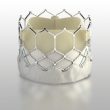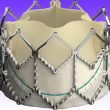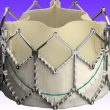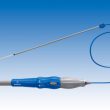In patients with large and extra-large annuli, transcatheter aortic valve replacement (TAVR) is safe and feasible with 3rd generation valves: the 29mm balloon expandable valve Sapien-3, and their competitor, the self-expandable 34mm Evolut R. The largest size of both devices was designed specifically for patients with large or extra-large annuli. However, one of them seems...
Good Evolution of Bicuspid Valves with EVOLUTE or EVOLUTE PRO
Courtesy of Dr. Carlos Fava. TAVR has matured over time and has advanced onto low risk patients, but one of its greatest challenges continues to be bicuspid valve patients. These represent between 1% and 2% of the population and over 20% of young adults requiring surgical valve replacement (SAVR). The study looked at 27,086 patients...
Surgical Valve Replacement Might Soon Be History
Patients with dysfunctional biological prosthetic valves have better outcomes with TAVR vs. surgical reintervention, beyond surgical risk. This study outcomes might even call into question the age cutoff to consider a mechanical vs. a biological prosthesis at first surgery. This analysis recently published in JACC looked at the outcomes of both possible strategies to treat...
SAPIEN 3: Good Outcomes in Bicuspids
Courtesy of Dr. Carlos Fava. Bicuspid aortic valves are found in approximately 2% of patients and represent the most frequent cause of aortic stenosis in young adults requiring valve replacement. Though TAVR has advanced significantly, this entity has not yet been included in the different randomized studies. At present, we have data from different reports,...
Valve-in-Valve: Good Evolution at Long-Term
Courtesy of Dr. Carlos Fava. In the last decades, there has been a marked increase in the use bioprosthetic valves in aortic position given their benefits over mechanical valves. However, long term follow-up has shown structural valve degeneration (SVD). Given the risk of a second surgery after TAVR, valve-in-valve (ViV) has been on the rise,...
The Most Read Scientific Articles of July in Interventional Cardiology
01- SOLACI PERIPHERAL | 2nd Clinical Case: Juxtarenal Abdominal Aortic Aneurysm SOLACI’s Department of Peripheral Endovascular Interventions brings a new challenging clinical case for the whole Latin American medical community so as to continue fostering and sharing scientific knowledge and experience among peers. Read more HERE 02- EuroPCR 2020 | A Trick to Find the Perfect...
Valve in Valve Presents Better Evolution than re-SARV
Courtesy of Dr. Carlos Fava. Surgical aortic valve replacement with bioprosthesis has proved its benefits, but it fails after 10 to 15 years. Transcatheter aortic valve replacement has been shown valid, especially in high risk patients, but we still have little information and no “head to head” studies to know what is best in this...
The Most Read Scientific Articles of June in solaci.org
01- The FDA Approves Ticagrelor for Primary Prevention in High Risk Patients The FDA has approved the indication of ticagrelor as primary prevention in high risk CAD patients with no history of MI or stroke. Read also HERE 02- Estimating the Risk of Infection for Healthcare Personnel Roughly one out of every 100 healthcare workers at...
After 8-year Followup, Good News for the Self Expandable Valve
As the transcatheter aortic valve replacement (TAVR) gains ground in lower risk populations and with better survival rate, concern over its durability has grown. This study brings us data and good news on the first-generation self-expandable valve after quite a long follow up. It included 990 inoperable or high-risk patients treated with CoreValve in 8...
Subintimal Re-Entry in CTO Improves Outcomes
Courtesy of Dr. Carlos Fava. Chronic total occlusions (CTO) are still one of the greatest challenges in our field, thus forcing the development of different complex strategies to resolve them. Additionally, the use of imaging techniques during these procedures has improved long-term results. The CONSISTENT CTO (Conventional Antegrade Versus Sub-Intimal Synergy Stenting in Chronic Total Occlusions)...









